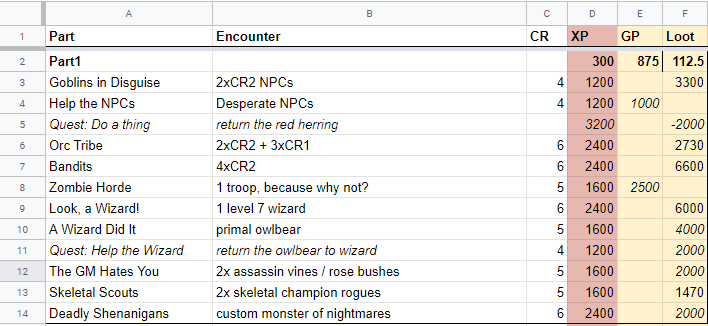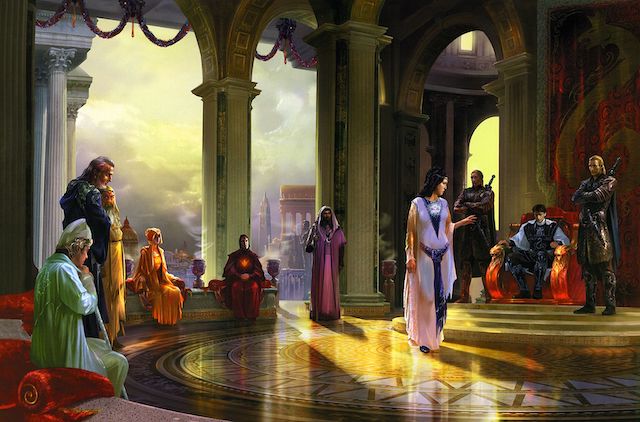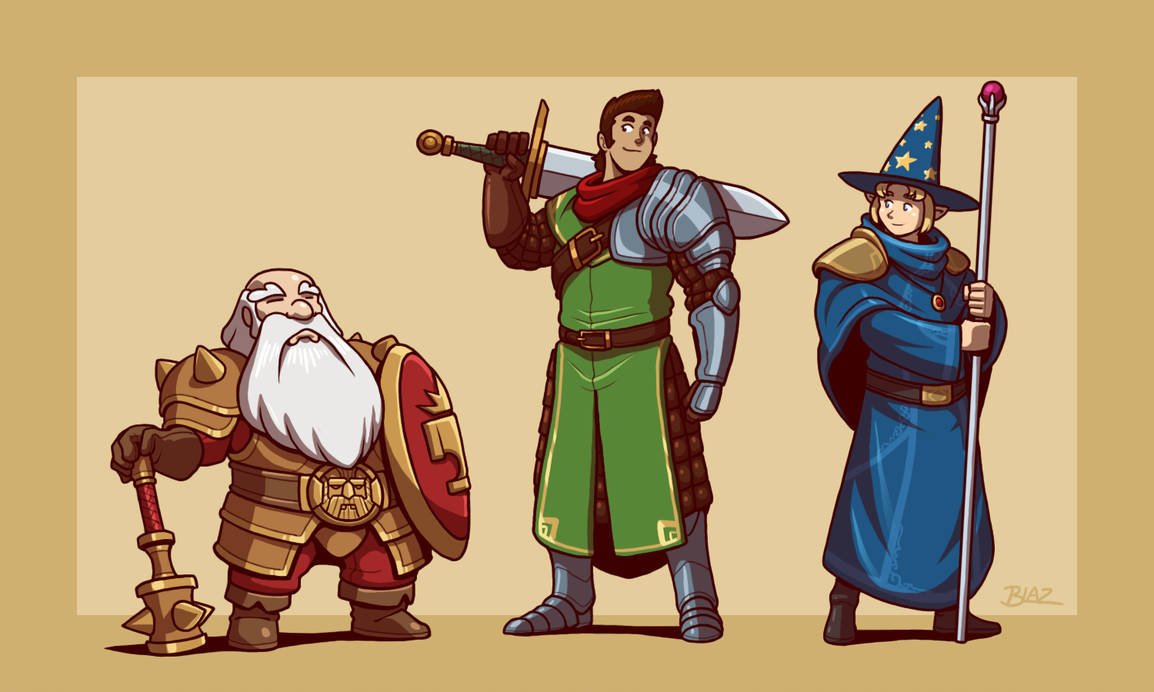Ok everyone, time to get down to some spreadsheet magic. Today we’re talking about how to balance the amount of experience and loot you provide in an adventure.
When designing an adventure, especially for publication, you need to make sure that you’re giving the PCs the correct amount of experience and loot. For published adventures, the publisher will generally want you to hit certain numbers in experience and monetary value. For home adventures, you’re going to want to use these guidelines as well to make sure your players aren’t upset about being under powered or taking too long to level. You also don’t want them to be over powered by having too many magic items and disposable income.
The Spreadsheet
This is best done in the Outline phase of writing your adventure. You don’t want to get the thing half-written and realize that you need to shoe-horn in an extra encounter or find a way to reduce the PC’s wealth by 5,000 gp. By making a spreadsheet, you can ensure that you’re able to automatically do all of the math and balance things correctly before you start writing the adventure in earnest.
I’m using Google Sheets, but you can also use Excel or some other spreadsheet software. The first thing you want to do is take your outline and put the section titles into a column for the adventure. I then usually use the next column for a very rough description of the encounter or section, just to remind me what that encounter is. The next line is the CR (if any) of the encounter. The next is the XP earned for completing the goal. Finally we have two columns for GP and Loot. GP is for straight up cash, gems, or art objects that get sold at full value. Loot is for equipment the PCs are likely to sell or salvage.
For the encounter title and description, I like to be able to look across my adventure and quickly get a good idea of how many different types of encounters there are so it doesn’t get too samey. You don’t want all undead non-stop forever, even if that’s the theme of the adventure. Instead, you want a healthy amount of different types of encounters (social, puzzle, traps, combat, etc) and different types of combats with different enemies (covered in another blog post). This list is a great overview to quickly check that you’re not being too repetitious.
CR list is great because you can look at the flow of the challenges you’re having your PCs face. It also comes into play later when we’re balancing loot and experience. Higher CR encounters yield higher rewards, but generally take up the same amount of word count. You my find out later that you need to eliminate one low CR encounter and make another one a high CR encounter to compensate for the gold/exp difference. Having CR listed here makes this all much easier.
The Gold column should list the direct cash the PCs get from an area. No math, just straight up rewards. We’re going to total this (I put it at the top) so we can keep track of how much wealth we’re giving out that the PCs have to buy upgrades and consumables. At the top, we’re going to want to add up all of the cash we’ve given the PCs, then divide it by the assumed number of PCs (usually 4 PCs in a –finder adventure). This lets us know how much cash each PC an expect to collect over the course of the adventure.
Next we look at the Loot column. For NPCs with gear, I use the NPC wealth by level to get a rough estimate, as that’s what I’ll use as a guideline when building the NPC later. You see it’s as simple as the number of NPCs times the value for that level.
More complicated fights with different NPCs of different levels. Just remember your PEMDAS so your formula checks out.
Finally, we need to add up all of the Loot we’re giving the PCs and make sure we’re not going over PC wealth. One thing to remember is that the PCs are likely to sell most of that loot eventually, so we want final sell values. When we calculate the amount at the top, we’re going to divide by 4 PCs but also by 2 to represent the 50% sales value in Pathfinder. If you’re writing for Starfinder, assume a 10% sale value and divide by 10. For other systems, you’ll have to use their typical sell value.
Simple enough, but I’m going to pull the total wealth given for the adventure in this column. I start with the amount of wealth I want each PC to earn (4,500 gp in this case), then subtract the total Loot given divided by the number of party members and adjust for sell value, finally we subtract the cash given to each PC. Doing all of this will show me how much in gp I still need to award to each PC. I can go lite on the number of heavy, based on the needs of the campaign.
In this instance, I ended up with 112.5 gp still needing to be awarded. That’s about 2.5% of my overall goal, so I think it’s acceptable.
Adjustments
So what do we do when the numbers are just not adding up? Well, that depends on the problem.
Not Enough Wealth
The easiest thing here is to either hide some loot or valuables in part of your adventure. Maybe it requires the PCs to search and find a hidden cache of items or jewels, but that’s a fairly easy way to balance out that number with minimal impact on your word count. Try and make this something flavorful so that it imparts a story element as well as gold to line the PCs’ pockets. You can also add a monetary reward to an existing quest. Maybe saving the townfolk not only gives the PCs a healthy XP bonus, but an old pair of magic boots as well or a farmer’s grandmother’s sword that they don’t even know how to wield properly… but just happens to be magical.
Too Much Wealth
Reduce quest rewards and hidden treasure. If that’s not a great option, consider replacing an encounter with NPCs and use monsters instead. Rather than using skeletal champion rogues, who need some gear to make them effective, I can use ghasts or wights who don’t need any gear. Now I can keep my XP budget the same but only affect the monetary rewards.
Not Enough XP
The easy fix is to increase the quest reward experience, but sometimes re-vamping encounters is the better tactic. Consider eliminating an “easy” encounter and turning a different “easy” encounter into a “hard” encounter. Just be sure not to throw the balance of the adventure off.
Too Much XP
You probably have too many encounters. Consider eliminating one, particularly if it’s not integral to the plot. You can also make adjustments to the quest experience rewards to get this number to balance.
Final Note
If your adventure has sections the PCs are likely to skip, it’s ok to be “overbudget” on XP, GP, or Loot. If your adventure has a lot of downtime where PCs are going to want to make their own items (like Kingmaker) then you’ll probably want to give less wealth to the PCs as they’re likely to be maximizing their equipment by making it themselves.







